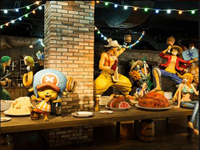Kamigamo Jinja


(Source: いま明かす! 旅を通じて広がった世界100景Y&Y)
Tatezuna
Hosodono, the building of the shrine and Tatezuna, cone-shaped sand hill, can be seen after going through the Nino Tori. Since it is said that God descends on these white sand hills that represent the mountain that is worshipped as a spirit of god, it provides a distinctive solemn atmosphere. It is also said these sand hills are the origin of Morijio, the Japanese traditional custom placing small salt piles at the entrances of houses to drive away evil spirits.

(Source: PhotoAC)
Aoi Matsuri (Kamo Matsuri)
On May 15th, Kamo Matsuri, known as Aoi Matsuri, one of Kyoto’s three big festivals, is held every year. It is called Aoi Matsuri because people participate with leaves of Aoi, hollyhocks. It is one of the few festivals that keeps the old tradition and is well-known for participants dressed in costumes from 1068-1185.

(Source: pixta)
Hosodono
Hosodono, the main building of the shrine, is enshrined behind the Tatezuna. It is designated as an important cultural property. The ground covers an area of about 670,000 square meters, there are over 40 buildings that are designated as national treasures, important cultural properties and World Cultural Heritage Site.

(Source: 旅 瀬戸内)

(Source: いま明かす! 旅を通じて広がった世界100景Y&Y)
Tatezuna
Hosodono, the building of the shrine and Tatezuna, cone-shaped sand hill, can be seen after going through the Nino Tori. Since it is said that God descends on these white sand hills that represent the mountain that is worshipped as a spirit of god, it provides a distinctive solemn atmosphere. It is also said these sand hills are the origin of Morijio, the Japanese traditional custom placing small salt piles at the entrances of houses to drive away evil spirits.

(Source: PhotoAC)
Aoi Matsuri (Kamo Matsuri)
On May 15th, Kamo Matsuri, known as Aoi Matsuri, one of Kyoto’s three big festivals, is held every year. It is called Aoi Matsuri because people participate with leaves of Aoi, hollyhocks. It is one of the few festivals that keeps the old tradition and is well-known for participants dressed in costumes from 1068-1185.

(Source: pixta)
Hosodono
Hosodono, the main building of the shrine, is enshrined behind the Tatezuna. It is designated as an important cultural property. The ground covers an area of about 670,000 square meters, there are over 40 buildings that are designated as national treasures, important cultural properties and World Cultural Heritage Site.

(Source: 旅 瀬戸内)






